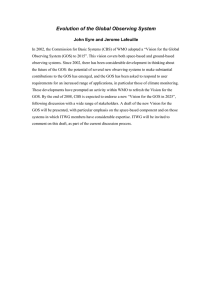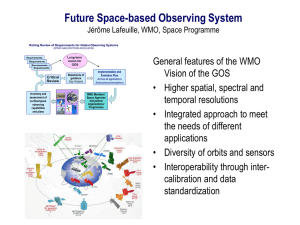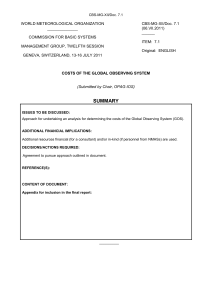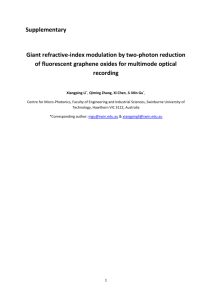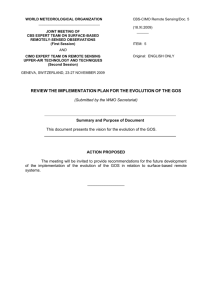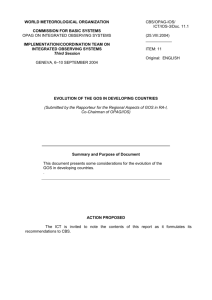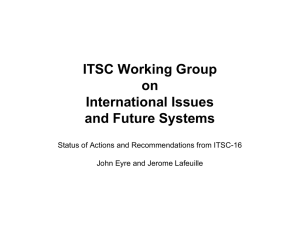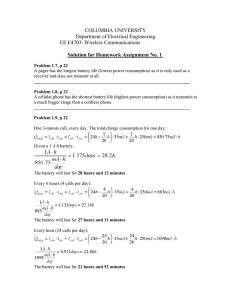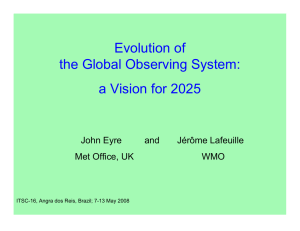The Redesign and Evolution of the Global Observing System
advertisement
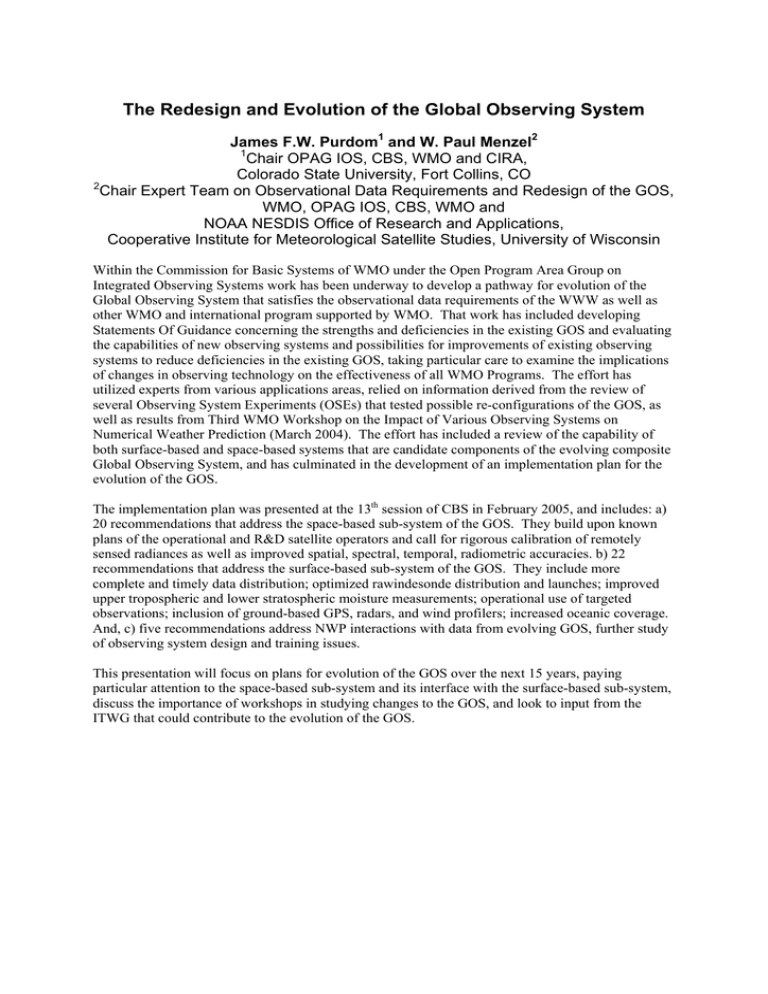
The Redesign and Evolution of the Global Observing System James F.W. Purdom1 and W. Paul Menzel2 1 Chair OPAG IOS, CBS, WMO and CIRA, Colorado State University, Fort Collins, CO 2 Chair Expert Team on Observational Data Requirements and Redesign of the GOS, WMO, OPAG IOS, CBS, WMO and NOAA NESDIS Office of Research and Applications, Cooperative Institute for Meteorological Satellite Studies, University of Wisconsin Within the Commission for Basic Systems of WMO under the Open Program Area Group on Integrated Observing Systems work has been underway to develop a pathway for evolution of the Global Observing System that satisfies the observational data requirements of the WWW as well as other WMO and international program supported by WMO. That work has included developing Statements Of Guidance concerning the strengths and deficiencies in the existing GOS and evaluating the capabilities of new observing systems and possibilities for improvements of existing observing systems to reduce deficiencies in the existing GOS, taking particular care to examine the implications of changes in observing technology on the effectiveness of all WMO Programs. The effort has utilized experts from various applications areas, relied on information derived from the review of several Observing System Experiments (OSEs) that tested possible re-configurations of the GOS, as well as results from Third WMO Workshop on the Impact of Various Observing Systems on Numerical Weather Prediction (March 2004). The effort has included a review of the capability of both surface-based and space-based systems that are candidate components of the evolving composite Global Observing System, and has culminated in the development of an implementation plan for the evolution of the GOS. The implementation plan was presented at the 13th session of CBS in February 2005, and includes: a) 20 recommendations that address the space-based sub-system of the GOS. They build upon known plans of the operational and R&D satellite operators and call for rigorous calibration of remotely sensed radiances as well as improved spatial, spectral, temporal, radiometric accuracies. b) 22 recommendations that address the surface-based sub-system of the GOS. They include more complete and timely data distribution; optimized rawindesonde distribution and launches; improved upper tropospheric and lower stratospheric moisture measurements; operational use of targeted observations; inclusion of ground-based GPS, radars, and wind profilers; increased oceanic coverage. And, c) five recommendations address NWP interactions with data from evolving GOS, further study of observing system design and training issues. This presentation will focus on plans for evolution of the GOS over the next 15 years, paying particular attention to the space-based sub-system and its interface with the surface-based sub-system, discuss the importance of workshops in studying changes to the GOS, and look to input from the ITWG that could contribute to the evolution of the GOS.
